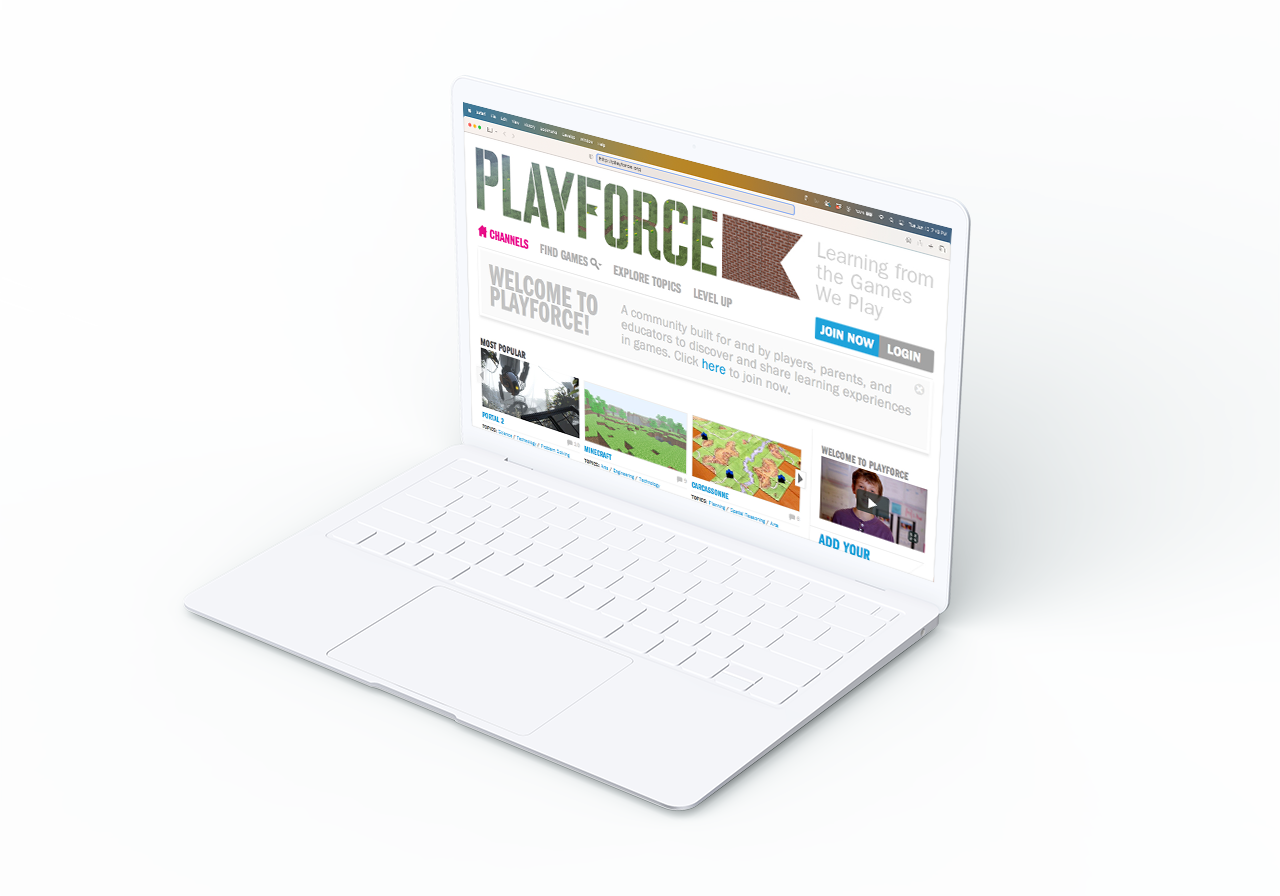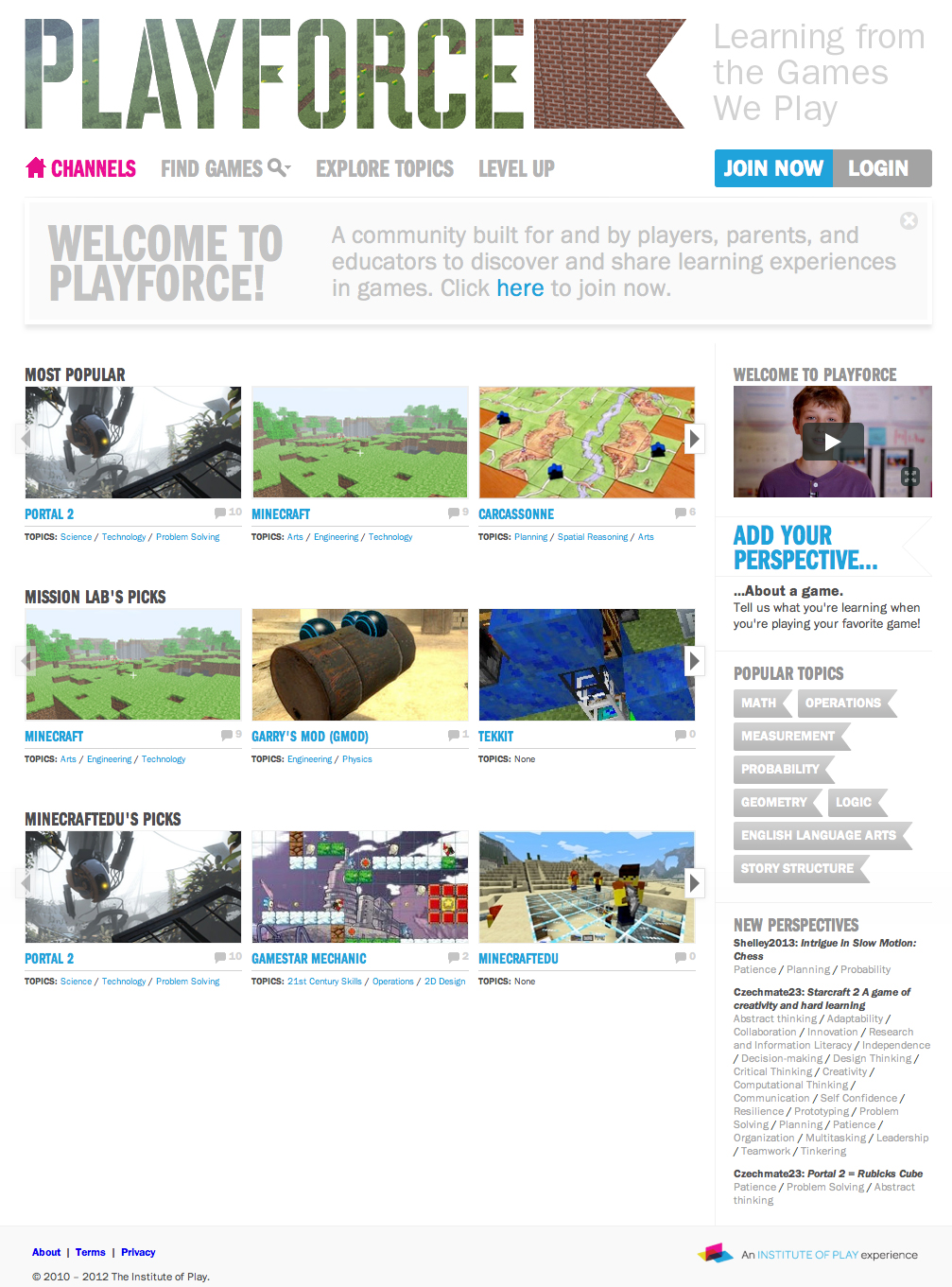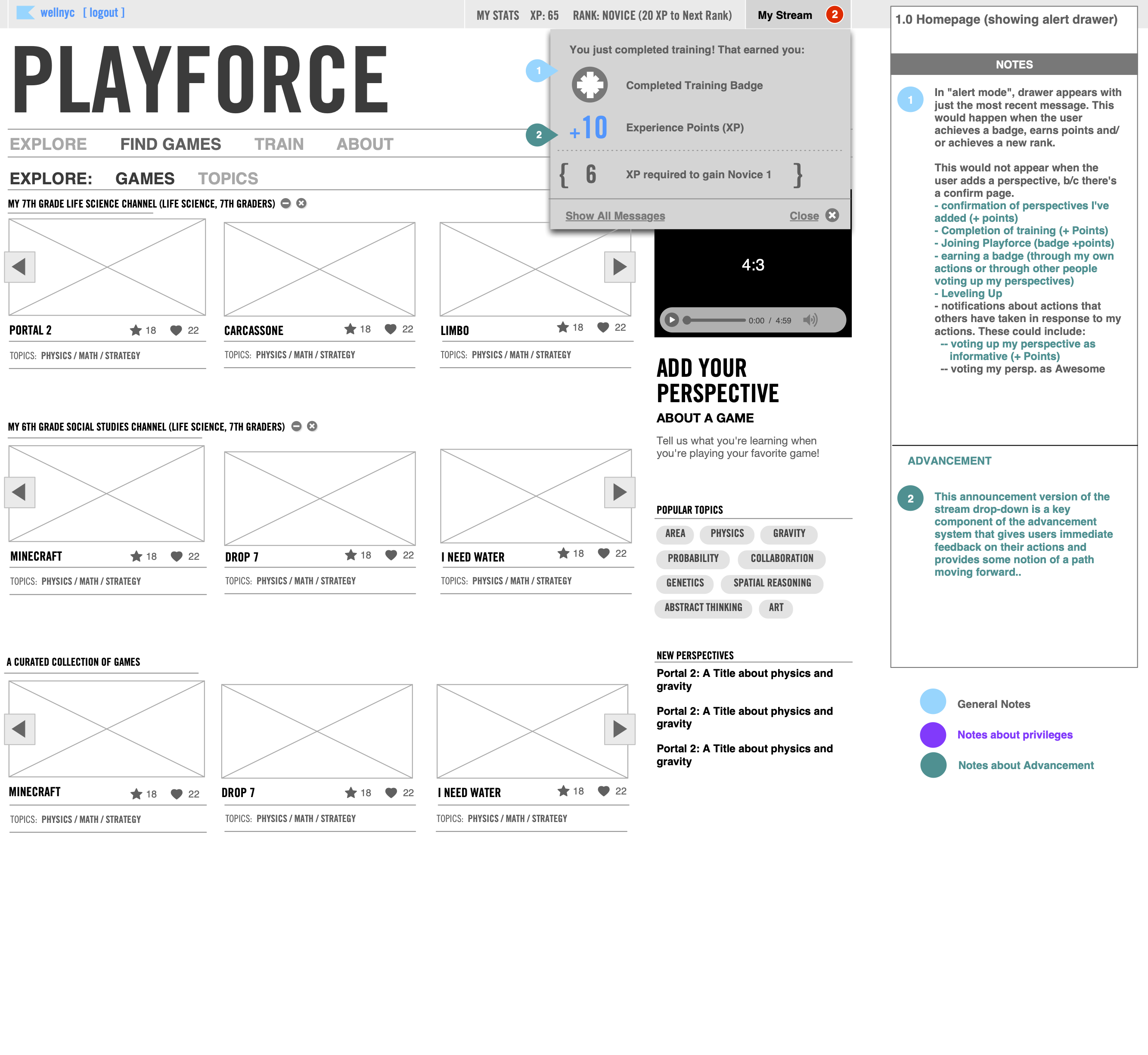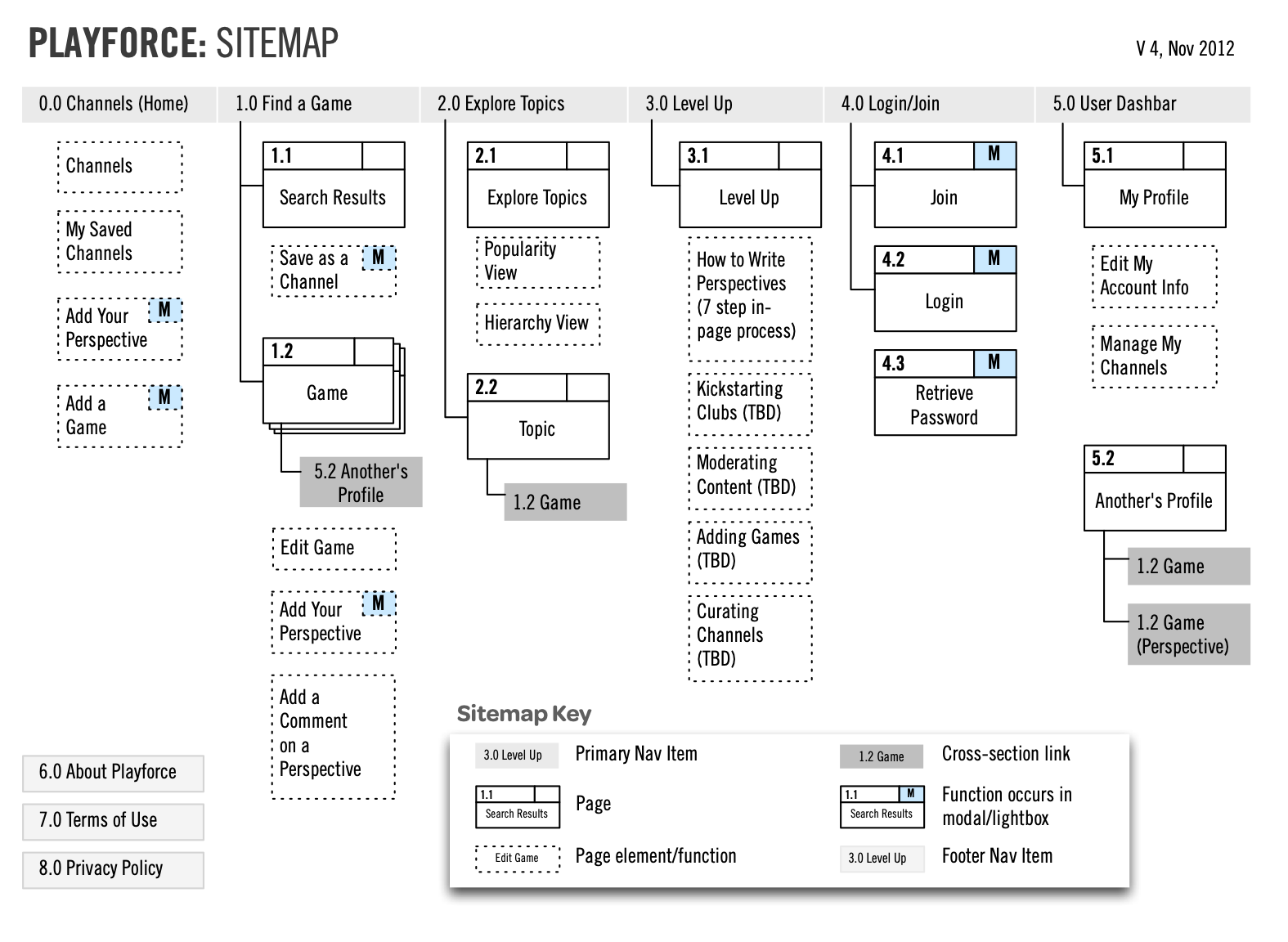Playforce
Organization: Institute of Play
Role: UX Designer

Challenge: learning game discoverability
Our goals included encouraging user-based learning game reviews across different audiences, including teachers, parents, and students. Additionally, how could we scaffold the submission process to elevate the discussion in a desired writing style.
Overview
Playforce is a community-driven website that provided a platform for teachers, parents, and students to find games that are good for learning specific topics, as well as provide a channel for game enthusiasts to share their understanding of games and learning. The goal of the website was to elevate the conversation around games through community interaction. Our challenge was to appeal to each of these audiences and to educate them on the sort of writing we were hoping to achieve, which was particularly tricky as there were few good models that existed at the time.
Approach
We took an Agile development approach to the project to facilitate iterative design and user testing cycles with the hope that the final product would more closely align with users' expectations for such a site. We began by constructing user personas and crafting the site's structure (sitemap shown bottom right). We then explored the design with a clickable prototype built in Axure, but after starting a fairly complex multi-step form flow, we decided that the prototype approach was too slow to work within our Agile cycle. So, we shifted to creating wireframes as our primary exploration tool.
Design
One of the challenges of relying on user-generated content (UGC) is how best to reward users for the quality of their writing and their overall site activity. After surveying sites that feature UGC, we decided on a combination of experience points, levels, and badges. Experience points were awarded for contributing to the site in written form and for being recognized by other people for your efforts. New privileges on the site were awarded at certain levels, which are achieved at specified numbers of points. Badges were awarded for activities that we wanted to encourage, such as contributing your first review. We felt it important to relay the earning of points, levels, and badges throughout, and the solution was to incorporate a user dashbar at the top of the viewport as a sort of “heads-up display” of stats and messages (as well as a link to the user's profile). Point messages included an indication of the number required to gain the next level. This dashbar can be seen in the wireframe middle-right.
Wireframes
Notes on the wireframe became fairly complex, as we needed to convey information about advancement and privileges as well as general interaction to the designer and the development team. We decided on a color scheme to help the scanability of the wireframe document.
Testing
As we proceeded through the project, we tested paper prototypes, visual designs, and digital solutions with both students and adults. We chose an informal approach that worked well in the Agile framework. In retrospect, we should have started testing much earlier, as our initial test results required that we backtrack to revise decisions made earlier in the process.
Outcome
Playforce was successfully launched, and it become a valuable resource for teachers, parents, and students to find games that are good for learning specific topics. The website also became a hub for game enthusiasts to share their understanding of games and learning, and it elevated the conversation around games through community interaction. The incorporation of the user dashbar and the use of experience points, levels, and badges has helped incentivize users to contribute to the site and has made the site more engaging for users.
(Note, the Institute of Play closed its doors a couple of years later, and the site was subsequently shuttered.)



Copyright ©2024, All rights reserved.